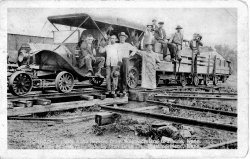
MAY CONTAIN NUTS

Search Shorpy
SHORPY ART

Framed or unframed, desk size to sofa size, printed by us in Arizona and Alabama since 2007. Explore now.
Join and Share
Ad-Free Shorpy
Shorpy is funded by you. Patreon contributors get an ad-free experience.
Learn more.

Recent comments
- Say what??
- Grapes?!
- A Beautiful Moment
- Such joy
- Bethune-Cookman University today...
- Yellow sky at morning
- Side Winder
- Air Quality?
- Sojourner Truth riot
- None were so blind(ed)
- The less famous sister
- Good ol' days?
- Rise and Fall
- Goo Goo Ga Joob
- Ticket Retention
- Not the only one
- Vagaries of War
- Killed by Amtrak
- Back to the Future
- Wanted --
- If you can't stand the light
- Centralized Traffic Control, I believe
- What's really happening
- Heckuva remote control!
- Sometimes — Things Go Bump!
- I SEE THE LIGHT
- Union Switch and Signal Company
- Get That Light Out Of My Eyes
- Eggs. Eggs. Eggs. The Egg Man is Here!
- Foreboding caption
Member Photos
The Shorpy
Print Emporium
Print Emporium
Search Shorpy
Search results -- 30 results per page
- War Store: 1941
- ... 1942 Nash sedans every day for 30 days, plus cash prizes daily. I'd enter in a heartbeat. No gas to run it, but it would look nice ... Posted by Dave - 01/17/2019 - 10:51am -
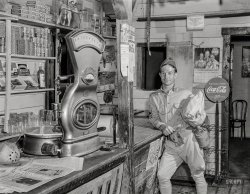
- Skunk Cabbage Acres: 1936
- ... for that fellow. The smell he must have to deal with on a daily basis, and the smell that he must bring into the house is enough to make ... Posted by Dave - 07/30/2012 - 10:50am -
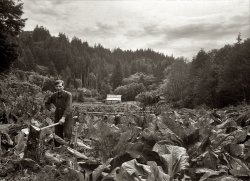
- Delicious Cakes: 1922
- ...
After the opening tomorrow night, the show will be open daily, except Sunday, from 3 to 5:30 and 7:30 to 10:30 p.m. Everyone will be ... Posted by Dave - 09/11/2011 - 6:47pm -
![Delicious Cakes: 1922 Washington circa 1922. "Food show. Ward exhibit." Among the tempting varieties of Ward's Cakes on display here: Silver Queen, Devils Dream, Kukuno, Creamy Spice, Sunkist Gold and Southern Pride. Plus Paradise Fruit Cake and something called "Homelike." View full size. National Photo Company glass negative.
What, no penathalenoleum?Store-bought cakes that actually look like they taste good, rather than the weird aftertaste and bloating you get from today's preservative-laden science projects. This is the first Shorpy photo that made me hungry. Well, OK, the second… after the possum gloop splattered into the gutter.
Food Show Exhibitors
Washington Post, Feb 4, 1923
60 Exhibits Prepared for Pure Food Show
Convention Hall Converted Into Dazzling Picture
for Opening Tomorrow
Sixty exhibits and practical demonstrations of pure food products and labor-saving devices for the home are scheduled for the national food show and household exposition, which opens at 7:30 o'clock tomorrow night in Convention Hall, Fifth and L streets northwest, and continues for two weeks.
The hall has been converted into a veritable fairyland with rows and rows of dazzling booths and yards and yards of artistically draped bunting. Salesmen and demonstrators will gather at the hall tomorrow morning to receive final instructions.
After the opening tomorrow night, the show will be open daily, except Sunday, from 3 to 5:30 and 7:30 to 10:30 p.m. Everyone will be given plenty to eat free -- coffee, tea, milk, soft drinks, "hot dogs," pancakes, salads, gelatine, cheese, salad dressing and other things.
The list of exhibitors follows:
France Milling Co. (Gold Medal Pancake Flour)
Joseph Tetley & Co.
Gelfand Manufacturing Co.
Browning & Bains Coffee Co.
Steuart Sons & Co. (sirup [sic] and molasses)
Foulds Milling Co. (macaroni and spaghetti)
Carry Ice Cream Co.
Noxzema Chemical Co.
Johnn B Heppe & Co.
E.J. Agee (Economy Darner)
Cheek Neal Coffee Co. (Maxwell House Coffee)
J.L. Kraft & Bros., Inc. (cheese)
Akin Manufacturing Co. (Shi-Nall)
Brewer Snyder Co.
A. Loffler Provision Co.
Corn Products Refining Co. (Parko)
O.J. DeMoll & Co. (pianos and talking machines)
Nelson Refrigerator Co.
Refrigerator Pan Alarm Co.
Rosslyn Packing Co.
Golden & Co.
National Furniture Co.
Corby Baking Co.
Hacker Cereal Co.
Thomas J. Lipton, Inc.
S. & S. Water Co
Genesee Pure Food Co. (Jell-O)
Wilkins & Rogers (butter)
Palmer Harvey & Co.
Walker Hill Dairy
C.F. Mueller Co.
Julius Lansburgh Furniture Co.
McCormick & Co.
Martin Gillet & Co. (House of Lords Tea)
P.B. Davis Co. (Davis Baking Powder)
S. Kann Sons Co. (modern kitchen utensils)
Hub Furniture Co.
Chapin Sacks Inc.
Mutual Service Bureau (electrical devices)
Kirkman & Son
Carroll Erwin Co. (electrical household goods)
Columbia Bottling Works
William Conradis & Co. (model bath room)
New Era Gas Stove Co.
Pillsbury Flour Mills Co.
King Electric Washer Co.
Ward Baking Co.
Doubleday Hill Electric Co. (radio receiving station)
Cook's Quality Cakery
Harry Chapel (broker)
Troco Nut Butter Co.
William T. Leahey & Co. (vegetable cutters)
Havenner Baking Co.
Ridgewood Orchards (apple)
and several additional exhibitors to be definitely announced tomorrow.
(The Gallery, D.C., Natl Photo)](https://www.shorpy.com/files/images/30186u.thumbnail.jpg)
- Boulder Colorado 1916
- ... perching her hands on her swollen belly, gazing toward the Daily Camera office and the foothills of the Front Range. Photograph by Harold ... Posted by notycoon22 - 05/20/2007 - 9:52am -
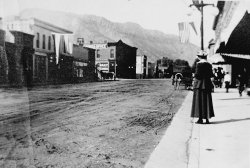
- Pharmacy Row: 1905
- ... sets of rods 16 hours could be had, then the rods changed daily. Later designs with improved air flow didn't consume their carbon as ... Posted by Dave - 04/12/2018 - 6:27pm -
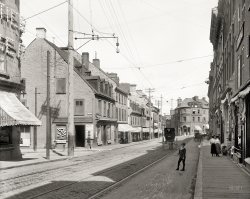
- Cuban Cargo: 1904
- ... and wheeling and dealing that had to have been part of the daily landscape.
The Dietz Lanterns…wonder where they were going or ... Posted by Dave - 09/10/2013 - 11:40am -
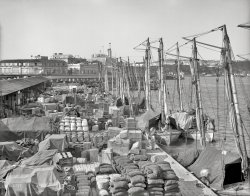
- Brooklyn Murder Trial
- ... a criminal defense lawyer, and am in that building almost daily. The courtrooms look exactly the same.
I wonder which courtroom it ... Posted by ltitus - 04/26/2007 - 2:56pm -
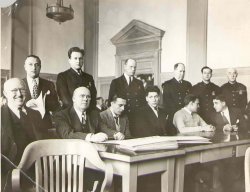
- Your Next Promotion: 1952
- ... the harried V.P. could relieve a bit of the stress at his daily three-martini lunches.
Cause and effect? Welllllll - is it ... Posted by Dave - 11/11/2014 - 1:48pm -

- Tractor Fair: 1922
- ... have been held throughout the country since May.
Daily demonstrations will be made with every piece of machinery on the grounds. ... Posted by Dave - 09/11/2011 - 7:30pm -
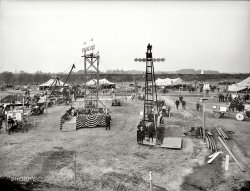
- Teamwork: 1939
- ... twins lives were so intertwined that "coincidence" was a daily experience. If you ever have the good fortune to know identical twins, ... Posted by Dave - 07/21/2013 - 7:22am -
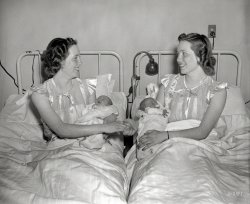
- Beach Style Parade: 1922
- ... for a while. But in the 1940s, she reappeared in various daily newspapers as "Chicago's Stone Woman," a reference to a disabling ... Posted by Dave - 07/06/2018 - 10:20pm -
![Beach Style Parade: 1922 June 17, 1922. Washington, D.C. "Washington Advertising Club bathing beauty contest at Tidal Basin." Harris & Ewing Collection glass negative. View full size.
"Quintet of beauties wore the models of Lansburg & Brother, which captured first prize in the store competition." Caboose of the quintet is Miss Iola Swinnerton, First Lady of Shorpy, who took second in the individual costume contest. Read all about it here.
Miss IolaIt's nice to see her again, even if only a glance.
Laurels to Former Follies Girl
Washington Post, June 18, 1922.
CROWN ANNA NIEBEL
BEACH STYLE QUEEN
Judges at Tidal Basin Contest
Award Costume Laurels to
Former Follies Girl
5,000 WATCH AS 45 PARADE
Simple Attire Wins -- Miss Swinnerton Second -- Lansburgh's Captures Store Prize
Five thousand Washington lovers of the aesthetic, artistic and beautiful -- and, incidentally, of aquatic pastimes -- crowded the Tidal Basin bathing beach yesterday afternoon to witness the annual bathing costume style show, staged under the auspices of the Washington Advertising club. Bathing costumes entered by 11 local stores were exhibited by 45 selected models.
Miss Anna Niebel, former Follies girl, who lives at 1370 Harvard street northwest, won first prize by unanimous vote of the judges. Her prize-winning costume was one of the most simple exhibited, indicating that the element of practical usefulness was taken into consideration by the judges in making the award. She represented the Sportmart [seen here, here and here].
Former Winner Takes Prize.
Miss Iola Swinnerton, 3125 Mount Pleasant street, winner of a former beauty contest at the basin, was the second choice of the judges. Her suit was one of the five entered by Lansburgh & Bros., the firm to which was awarded the cup for the best composite store exhibit.
L.E. Rubel, chairman of the Advertising club committee, in charge of the contest, presented the cups to the winners.
The entries ranged from the extreme simplicity of the one-piece type of suit with the abbreviated skirt to more elaborate creations with multitudinous frills and ruffles. A knitted toque to match the wearer's suit was one of the innovations in bathing headgear that attracted attention.
Not So Much Scantiness.
Most of the suits were more extensive, so far as the amount of material used was concerned, than those exhibited in former years. A rubber suit of green and white cut on extremely loose lines set the pace for originality.
Weather conditions were ideal for the show, although it had been announced that all suits entered were of the kind that could have been worn in the rain without damage.
Iola!As always, I only have eyes for Ms. Swinnerton. She is always lovely.
Iola's second 15 minutes of fameAfter the roaring twenties, Iola Swinnerton's trail goes cold for a while. But in the 1940s, she reappeared in various daily newspapers as "Chicago's Stone Woman," a reference to a disabling affliction that caused some of her muscle tissue to calcify, leaving her disabled. Her 1942 marriage to Theron V. Warren, described as an organist and shipyard worker, was also covered, including photos in various papers of her repeating her vows from her wheelchair. Other than an unsuccessful petition for certiorari to the U.S. Supreme Court filed on behalf of Theron V. Warren in 1958, and his death in 1975, I could find no other clues to their fate after 1947.
[According to our earlier research, Iola Taylor married Gerald Swinnerton in 1918; he deserted her in 1941. Evidently her affliction was too much for him to bear. - Dave]
(The Gallery, D.C., Harris + Ewing, Iola S., Swimming)](https://www.shorpy.com/files/images/SHORPY-42237a.thumbnail.jpg)
- The Cramer Boys
- ... cook in order to feed this crew their meat and potatoes daily, not to mention the laundry. Any girls in this family to help Mom? Guess ... Posted by jpcramer - 09/20/2011 - 12:39am -

- A Clean Sweep: 1922
- ... the favorite elephant at the National Zoo, has his daily bath and scrubbing. Keeper Charlie Louis getting in the preliminaries ... Posted by Dave - 11/09/2016 - 2:24am -
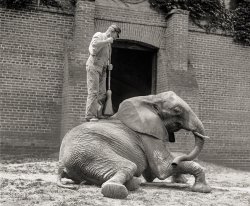
- Eleventh and P: 1942
- ... has not been improved upon. You can still ride them in daily service in Philadelphia on the Route 15 (Girard Avenue) line of SEPTA, ... Posted by Dave - 08/18/2018 - 6:38pm -
![Eleventh and P: 1942 August 1942. Washington, D.C. "Corner store on 11th Street N.W. which is patronized by Mrs. Ella Watson, a government charwoman." Medium format negative by Gordon Parks for the Office of War Information. View full size.
Dark Blue-Green & GrayTo accommodate the city's narrow streets and tighter corners the Washington, D.C. PCC streetcars were shorter than the ones used in the rest of the nation's cities. All the rest had 5 windows behind the rear exit where this one has 4.
The livery is shown here (later, when it was taken over by the owner of Trans-Caribbean Airlines it was given a bright turquoise/aqua/orange decor)
I'm in a state of suspense!Does that coyly photographed public conveyance have a sign in front pointing out the rear entrance?
Talk about suspenseTo answer slr in tx, the sign is to get boarders to not block up the rear exit. Some cities allowed boarding from the back, others have waffled back and forth over time. In days gone by, conductors stationed by the back door at key stops would collect fares and allow boarding by the back door to speed things up.
Now, how did that streetcar get there? It is well parked with brake set (those blocks between the wheels) and its pole down. But where are the wires, either for the track its on or the adjoining track?
[The power supply is under the street. -Dave]
Speaking of SuspenseThe block seen between the wheels is, indeed, one of the brakes on these cars. However, it is very hard (if not impossible) to determine from a photograph like this if this particular brake is applied. The blocks are known as track brakes, and are actually electromagnets which, when energized, are attracted to the rail. Thus, the force for the friction is not applied by the weight of the car, and also not through the wheels. Since these are electromagnets, they need to be close to the rail when not in use, so they are suspended on springs, less than an inch off the rail. They are very effective, and are normally used only in emergency or very slippery rail situations. They were controlled by a button, and were either off or on, with no ability to modulate the braking effort.
The cars had other brakes as well: dynamic using the motors as generators, and either air or electric (spring applied, electrically released) "parking" brakes.
No overhead wires!In DC, overhead wires were banned, so streetcars drew positive power from a conduit between the running rails. The current collecting device, mounted beneath the car, was called a plough (plow). For streetcar lines that also ran outside of the District, current was collected in the traditional way, i.e., trolley pole on the roof of the car to overhead wires; that's why this car also has the trolley pole. In either system, the running rails carried the return (neutral/ground/negative) back to the source of generation (powerhouse/substation).
Manhattan was another location where overhead trolley wires were banned; trolleys there also used the plow and center conduit for current collection. Many trolleys that only ran in Manhattan were not equipped with trolley poles at all, having only the plough.
The PCC car in the color photo is of later vintage than the earlier model PCC car in the Shorpy photo; note that the car in the B&W image lacks standee windows.
(By the way, it's "streetcar" in the South, "trolley" in the North. That's why Tennessee Williams's play is not titled "A Trolley Named Desire."
PCC cars, manufactured from the mid-1930s to the late 1940s-early 1950s, represented the pinnacle of street railway car development. They were smooth, quiet, and comfortable. The design has not been improved upon. You can still ride them in daily service in Philadelphia on the Route 15 (Girard Avenue) line of SEPTA, and also in San Francisco.
(The Gallery, D.C., Gordon Parks, Stores & Markets, Streetcars)](https://www.shorpy.com/files/images/SHORPY-8b14858a.thumbnail.jpg)
- Orphan Odyssey: 1924
- ... A tutor is with the caravan and the children have daily school sessions. The report of their progress is mailed back to the ... Posted by Dave - 10/22/2015 - 12:29pm -
![Orphan Odyssey: 1924
23 Students Here After
Crossing Continent on Way to Florida.
The tourists' camp in East Potomac park has been temporarily converted into a school. Twenty-three children from 3 to 19 years of age, students of the Draper's Children's Home, of Des Moines, Wash., are making their home there after a five month's trip across the continent.
They left Des Moines in June in a caravan of sleeping trucks, kitchen wagons and closed automobiles, bound for Florida, where they will pass the winter. They arrived here Friday. H.M. Draper, superintendent, heads the school-caravan.
A tutor is with the caravan and the children have daily school sessions. The report of their progress is mailed back to the superintendent of schools in Spokane, Wash., where they normally attend.
Most of the children are musicians or singers. Saturday they serenaded The Washington Post and the District commissioners and they are planning outdoor concerts here for this week.
-- The Washington Post, Nov. 24, 1924
Nov. 25, 1924. Washington, D.C. "Orphans of Des Moines, Wash., at tourist camp." National Photo Company Collection glass negative. View full size.
"Children's Industrial Home of Des Moines"I wonder if they didn't go to school in Spokane, but had to report back to some sort of state education board? According to the Highline Historical Society, Des Moines had 4 room school house at this time. http://www.highlinehistory.org/PHOTO_COLLECTION_FINDING_AID.pdf
The Des Moines Historical Society has a fabulous monograph on the Draper's and their home. http://dmhs.org/monographs/draper-childrens-home.html Although it doesn't elaborate much on their traditional schooling, it does have some great insights into why all these orphans are musicians and singers. I love that in addition to the "Opera House", where "we teach and train our children every thing necessary for first class Musical Comedy and Vaudeville Entertainments" (as printed in a flyer c. 1915),there was an operating "Printing Plant" in which students did all the typesetting and printing for a monthly newsletter that they helped write. Not everyone was born to be an entertainer after all.
It seems like the Draper's really cared for the well being of these children and were obviously aware of the struggles that would face them after leaving an orphanage or other such institution.
Why Spokane?It strikes me as odd that they are reporting back to the Spokane school, which is on the opposite side of the state from Des Moines. In 1924 it was a 2 day trip from one to the other (according to my mom, who did it back then).
[They're reporting back to Spokane because that's where they go to school, according to the news item. - Dave]
(The Gallery, Cars, Trucks, Buses, D.C., Kids, Music, Natl Photo)](https://www.shorpy.com/files/images/SHORPY-26473u.thumbnail.jpg)
- First of the Mohicans: 1904
- ... carpeting, and toilets among other things.
"She sailed daily from Baldwin (Ticonderoga) at 7:20 am, stopping at all of the landings ... Posted by Dave - 06/11/2016 - 8:02pm -
![First of the Mohicans: 1904 1904. "Sagamore Hotel dock, Green Island, Lake George, N.Y." 8x10 inch dry plate glass negative, Detroit Publishing Company. View full size.
SkiffsThose row boats are what we called St Lawrence skiffs when I was a kid. My family had a cottage on the St Lawrence River at Point Vivian, near the International Bridge. Our only boat was a double oar-lock skiff very similar to the ones pictured.
It was a beautifully made and maintained wooden boat, but I yearned for something with an outboard motor and drooled over the Chris-Crafts and other inboards seen at the public docks in Alexandria Bay!
Mohican I (1894 - 1908)"The first Mohican [shown here] was built in Lake George Village on Pine Point. She was launched in 1894, she was 93 feet long and 17 feet wide and weighed 150 tons (the current Mo weighs 200 tons). She was propelled by a single 200 horsepower steam engine which worked a single propeller.
"She wasn't originally built for the Steamboat Company, but she was later purchased by the company. The company then improved the main deck, added steam heating, carpeting, and toilets among other things.
"She sailed daily from Baldwin (Ticonderoga) at 7:20 am, stopping at all of the landings when signaled to, and arrived at Caldwell just in time to catch the 11:25 am southbound train. She then left Caldwell to head back up to Ti at 2:45 pm and (once again after making all her landings) arrived in Baldwin at 6:30 pm. During busy times in the summer, she also made stops in Paradise Bay and the Narrows.
"After 14 years of faithful service the Mohican (I) was retired on 1908, just as the new steel-hulled Mohican (II) was rolled into service to replace her. The first Mohican was dismantled in Ticonderoga that same year."
Source: Lake George Steamboat Company.
The Lake George Steamboat Company turns 200 years old in 2017.
The Mohican II, which is still in service and is on the National Register of Historic Places, also has the antlers mounted at the top of the wheel house. The Mohican II is shown in the first photo below, and the other photo shows another view of the Mohican I.
(The Gallery, Boats & Bridges, DPC)](https://www.shorpy.com/files/images/SHORPY-4a11456a.thumbnail.jpg)
- Louis Pelissier: 1916
- ... EMPIRE STATE - in construction: CHRYSLER BUILDING & (DAILY) NEWS IN MIDDLE FOREGROUND." I can plainly see the Chrysler Building, but ... Posted by Dave - 12/18/2007 - 10:27pm -
![Louis Pelissier: 1916 June 19, 1916. Fall River, Mass. Louis Pelissier, 29 Eighth Street, 16 years old (May 16, 1916). Applicant 2nd grade - deficient mentality. Doesn't know name of place where he is going to work. Made it out for Small's mill, they weren't sure. Had been a sweeper but work was too hard for him. Didn't know how much he was to get. (Miss Smith to see what kind of card he got.) Worked at Union Mill, $3.27, as a sweeper. View full size. Photo and caption by Lewis Wickes Hine.
Louis date of birthI think we have a typo, DOB probably May 16, 1900. I assume he was paid $3.27 per week. How did Hine find these people?
[Oops. Fixed. Actually I think he is saying Louis turned 16 on May 16, 1916; I should not have added the word "born." But yes, 1900 is when he would have been born. From what I gather reading Hine's caption notes, he traveled from town to town to various factories looking for working kids. Many places had signs outside saying BOYS WANTED. He spent 16 years doing this (1908-1924), taking thousands of photographs with a gigantic view camera that must have weighed around a hundred pounds. - Dave]
Lewis HineAbout a year ago I read a book titled "Empire Rising" by Thomas Kelly. It is a novel taking place around 1930 about the construction of the Empire State Building. Hine was the "official" photographer for the building, I suppose, hired by the corporation that built it. He is referred to often in the book. The copy I have (a full size paperback) has a picture on the cover of the building under construction in 1931, an amazing shot of a worker standing high up on the superstructure apparently sending a signal by pointing at someone below. The description of the photo on the back cover of the book describes it as "ATOP EMPIRE STATE - in construction: CHRYSLER BUILDING & (DAILY) NEWS IN MIDDLE FOREGROUND." I can plainly see the Chrysler Building, but they must have cropped the News building out of the shot. The picture is in the collection of the NY Public Library, which is not too far from where I live, and I think I'll walk over and see if I can see the original. I don't know if you have access to it, but it it's a natural for Shorpy.
Mel Tillman (Mr Mel).
(The Gallery, Kids, Lewis Hine)](https://www.shorpy.com/files/images/05060u1_1.thumbnail.jpg)
- No Future Here: 1939
- ... out from my fourth grade class who view your photos almost daily and are familiar with Dorthea Lange's wonderful work.
(The Gallery, ... Posted by Dave - 05/23/2018 - 7:16pm -
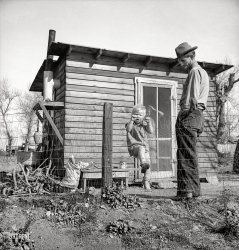
- The Greatest Generation: 1922
- ... every child had to be taken outdoors for fresh air on a daily basis. The picture's title is thought-provoking too as just 18 to 20 ... Posted by Dave - 08/02/2016 - 10:19am -
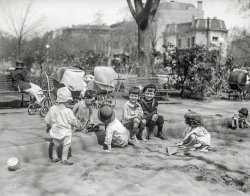
- Sit-Down Comics: 1943
- ... modern lifestyle. My grandfather used to subscribe to a daily Polish newspaper printed in NY called "Nowy Swiat" (The Polish Morning ... Posted by Dave - 04/20/2017 - 10:59pm -
![Sit-Down Comics: 1943 August 1943. Southfields, New York. "Interracial activities at Camp Nathan Hale, where children are aided by the Methodist Camp Service. Comic papers are very popular during the campers' free periods." Medium format nitrate negative by Gordon Parks for the Office of War Information. View full size.
Comics from the old daysWhen I was a kid many moons ago, I enjoyed comics like "The Katzenjammer Kids", "Terry and the Pirates", "Little Lulu", Li'l Abner", "Steve Canyon", "Dick Tracy", "Captain Marvel, "Plastic Man", etc. (there were a million of 'em) but one never sees these anymore, nor would they understand them, even if they did, as the situations from those times would not be relative to today's high technology and modern lifestyle. My grandfather used to subscribe to a daily Polish newspaper printed in NY called "Nowy Swiat" (The Polish Morning World) which had only one comic strip each day, "Felix the Cat" (in black and white) so until I was a teenager, I assumed Felix was a Polish cat. Coincidentally, at that time (1940's) our Polish parish priest was also named Felix so it all seemed logical to my young, impressionable brain. This is how misinformation gets started and passed along. As for the photo above, it reminds of a line from an old song "Don't get around much anymore" where Sinatra sang "...the funnies weren't funny, they didn't even make me smile..." since none of the kids are smiling.
What's that?Behind the guy in the white shirt, he's up front/left. Is a stray hand over some kind of a ball. Marble?
[Looks like a spent photo flash bulb. -tterrace]
(The Gallery, Camping, Gordon Parks)](https://www.shorpy.com/files/images/SHORPY-8d40648a1.thumbnail.jpg)
- Detroit Police and RCMP: 1951
- ... About the only time I have ever seen them out and about daily in their dress uniforms is in Banff, mostly for the tourists.
... Posted by DetroitScott - 06/07/2013 - 6:08pm -
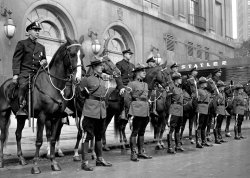
- War Wedding
- ... a friend of the family and photographer for the New York Daily Mirror.
(ShorpyBlog, Member Gallery, Weddings) ... Posted by Toyofield - 03/04/2008 - 10:42pm -
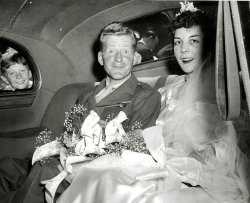
- Lazy Sunday Afternoon: c. 1968
- ... '67, '68 or '69) lying on the sofa and reading the Sunday Daily News (New York's Picture Newspaper). The bulletin from nearby St. James ... Posted by Photoscream - 11/03/2010 - 9:07am -
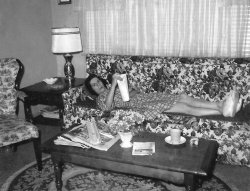
- Delta Thresher: 1940
- ... example of especially memorable imagery.
With its daily presentation of so much exemplary work, I would be more than a little ... Posted by Dave - 02/13/2020 - 4:48pm -
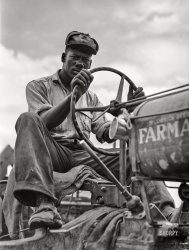
- Michigan Mystery #2 Solved
- ... and found an old newspaper ad from the 1936 Ironwood Daily Globe
http://newspaperarchive.com/daily-globe/1936-05-15/page-6/
It had their address which is how I was able ... Posted by mamyers - 08/26/2012 - 5:50pm -
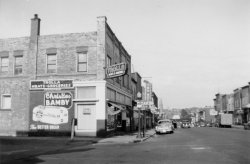
- The Elephant Boy: 1927
- ... is one of a troupe of five performing elephants whose daily stunts will be one of the big features of this year's fair in Winchester. ... Posted by Dave - 08/15/2016 - 4:39pm -
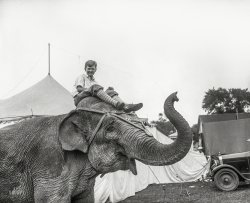
- Bottling #2
- ... bottled the formulas, and delivered them to the home, on a daily basis. That is what I think is going on in these pictures. The women in ... Posted by Vintagelover - 06/13/2014 - 8:28pm -
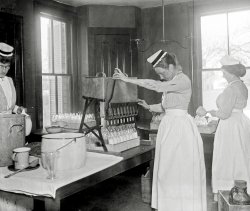
- Bicycle on 34th Street (Colorized)
- ... anyone spot Clark Kent leaving Macy's to get back to the Daily Planet? View full size.
Superman Here he is. Not on duty ... Posted by Baxado - 04/24/2015 - 7:26pm -
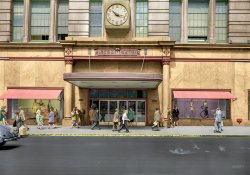
- Santa Fe Trailways (Colorized): 1940
- ... office at Pie Town, New Mexico. This stage comes through daily except Sunday. It takes in cream for the Pie Town farmers to Magdalena ... Posted by Lamont_Cranston - 07/21/2020 - 2:46pm -
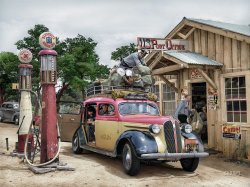
- Whatever Works
- "Daily auto service from Westmoreland to Blaine, Kansas." Circa 1914.
... Posted by pabrown - 08/18/2008 - 7:12pm -
